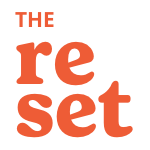A lot of people seem to be under the misconception that you need to have an enormous variety of equipment to exercise at home. This is simply not true. With an inexpensive tool or two and some creativity, you can enjoy (and sort of not enjoy…) a variety of at-home workouts that are challenging, fun & effective! To increase the number of exercises you can do and add a little interest to your daily exercise routine, add one or any combination of the following:
- A resistance band (this is our ONLY equipment in our always fresh & exciting Belly Bootcamp classes, by the way!)
- A pair or two of dumbbells in the 10-15 pound range (for a woman; 20-30 pounds for a man)
- A medicine ball
- A stability ball
There are tons of other gadgets you can purchase, but the above will take up very little room (except the stability ball, which you can stash in a closet or use as a chair when not working out… plus the kids will love it so it will probably get more use than any of your other gear…).
Now, no matter what gear you use to add variety and/or resistance, or even if you are just using bodyweight, there are a few tricks we trainers like to use to increase the intensity of an exercise.
Here are just a couple of the tricks we use with Belly Bootcamp clients:
- Quarter reps. In the middle of a rep, lengthen (about a quarter of the total range of motion, hence the name “quarter rep”) the muscle briefly, then contract again to finish the rep. For example, when squatting, squat down to the bottom of your squat, rise up about a quarter of the way and squat down again, then return to standing to complete the rep. It’s like adding a mini rep into your regular rep and it greatly increases the intensity. You can do this with any exercise but it is easiest to control with bodyweight and free weight exercises instead of heavy machine exercises.
- Drop sets. Only have a couple of sets of dumbbells? Do as many reps as you can at the highest possible weight, then drop down to the next lowest and do as many reps as you can… then drop down to the next lowest. For example, begin a bicep curl with 15-pound dumbbells; once you can no longer lift with good form, drop down without resting to 10-pound dumbbells and continue as if it were all one set, until you can no longer lift with good form. Drop sets can also work with bodyweight exercises – trying to build up to a certain number of push ups or a long plank? Do what you can from the toes, then challenge yourself to do more from the knees, as if it were one long set.

at_home_workout
- Slow reps. It’s amazing how a tempo change can increase exercise intensity. In your cardio, you obviously realize how running (or biking, swimming) faster will increase the intensity but when performing resistance training, slowing down the reps can really produce great results. Let’s use a bodyweight example: in a push up, you might slow the descent so it takes you 5 seconds to reach the bottom of the push up, with arms completely bent, then 5 seconds to push up. Slow reps can be done with bodyweight, free weights and even machines.
- Eccentric training. That slow tempo we just discussed works exceptionally well to build strength when we apply it only to the eccentric or “negative” phase of an exercise. Basically, drag out the easy phase of your exercise – the longer, the more challenging – and complete the hard phase (the push/pull/press/etc.) with power, at regular tempo. In the case of a push up, you might slow the descent and bend your arms, lowering yourself over 5-10 counts, then exhale and press up in 1 count (if you can’t press up, you can also just do the lowering part and get back into position for the next eccentric). Eccentrics, or “negatives,” are not only challenging but very effective at creating the micro-tears in muscle that spur growth.
- Supersets. You can accomplish the same amount of work in 2o minutes that someone else might spend an hour on, if you use your “breaks” between exercises to work a different muscle group. After a leg exercise, switch to an upper body exercise, then back to legs again. Upper body and lower body supersets are the simplest way to break up your workout to keep you moving the entire time, burning tons of calories and never wasting a minute. You can even superset the same muscle group when you want real intensity; try a set of squats holding your baby, some dumbbells or a heavy household object, and alternate with jumping jacks, which still work the lower body but in a different manner. For core, you might superset sit ups with plank. For upper body, superset a push (push up, shoulder press, etc.) with a pull (bicep curl, row, etc.). Fun!
Try adding one of these methods to your next workout – perhaps pick one to try this week, then another next week and the third the following week so you can really practise them and feel the results independently, to see which you prefer.
What is your surefire method for an intense at-home workout? Favourite exercise? Favourite superset?
